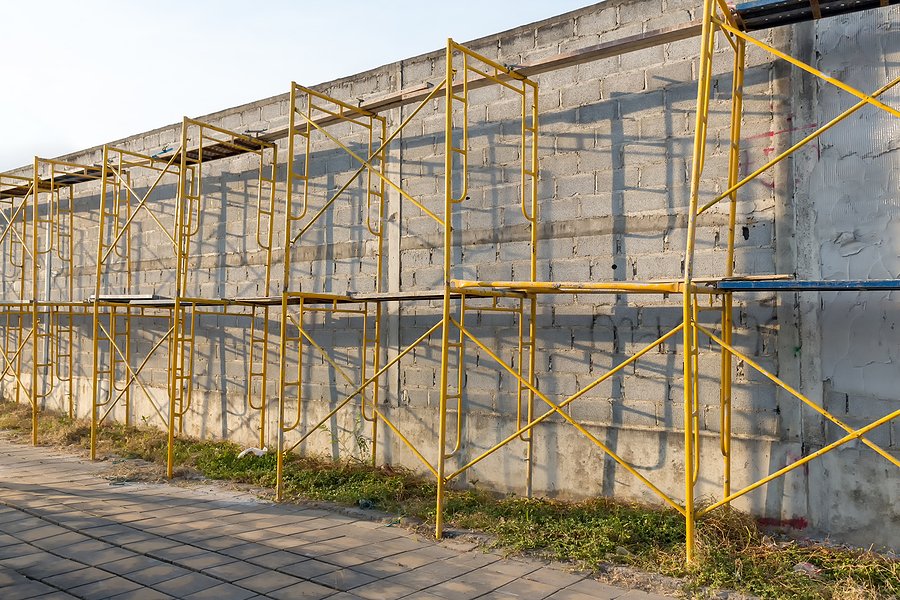Scaffold Safety: Four Day-to-Day Hazards and Ways to Decrease Risk Exposure

72% of workers are injured in scaffold accidents due to either planking issues, the scaffold
support moving, or employee slipping down, according to a study by the Bureau of Labor and
Statistics. 65% of the workforce is included in scaffold work that is crucial in the construction
industry.
Scaffolds are easy to use, efficient, and effective when used properly. However, there
exist 4 common hazards related to worker injuries that people should be aware of to ensure
scaffold safety. Those hazards are as follows:
4 Massive Hazards Of Scaffold Safety—
Falls
Falls happen because of the lack of guardrails which can be a result of poor installation and
personal fall arrest systems failing. Fall protection is needed when working heights are 10’ or
more according to OSHA standards. OSHA refers to the minimum level of protection. Several
general contractors need 100% safety against fall at 6’ or more while working on scaffolds. The
contractors are raising safety margins by over boarding the minimum requirements laid down by
OSHA standards.
Inaccessibility to the scaffold work area adds to the reason for falls. Proper access is important
by way of the stable ladder, tower, ramp, etc when the change to an upper or lower vertical is
24”. The way of access should be decided before erecting the scaffold and employees should
never be permitted to climb over cross braces, either for horizontal or vertical movement.
Collapsing of Scaffold
The scaffold should be erected considering several factors to prevent this hazard. The weight
required to be held by it including the weight of materials, workers, and the scaffold itself must
be accounted for. A few other things to consider would be foundation stability, distance from the
scaffold to the work field, placement of scaffold planks, and tie-in needs.
Scaffold Competent Person
Preplanning by a knowledgeable person would reduce the risk of injury and save cost for any
task. Moreover, a scaffold competent person must be there while building, moving, and
dismantling a scaffold. The person must inspect the scaffold every day to make sure it’s in a
stable condition. Poor construction can result in the complete collapse of the scaffold or falling
items, both of which can be disastrous.
Hit by Falling Materials
Besides being vulnerable to scaffold hazards, workers are also prone to be struck by tools or
materials that have dropped from scaffold fields. Hence, people should be protected against
falling objects. OSHA says it can be done in two ways. One is to install toe boards or netting on
work fields to restrict these things from falling to the ground or lower working areas. Another is
to surround with barricades that prevent workers from walking under work areas.
Caution or Danger tape is mostly used to save people from overhead mishaps but also
disregarded or removed due to allowing possible struck-by accidents. A much more effective
way is to install a robust system like plastic mesh or wooden fences. Creating barriers would
completely remove any chances of accidents when people will not enter the accident-prone
zone in the first place. Irrespective of the kind of falling object security used, it is necessary to
make every person in the work field aware of the work overhead.
Electrocution
With preplanning and a scaffold competent person, it should be ensured that there are no
electrical loopholes present in the scaffold. A distance of at least 10’ must be maintained
between the scaffold and electrical systems. Or else, the system should be insulated and
de-energized by the power company. There should be good coordination between the scaffold
erection company and the power company.
Last but not the least, every employee working on scaffolds should have training. The topic must
include identification of hazards, prevention, falling tools, and information on electrical hazards
Key Points:
Fall protection is necessary for work heights of 10 feet or more.
Proper access should be provided to the scaffold and restrict employees to climb on cross
braces for vertical or horizontal movement.
A scaffold competent individual must be there at the time of building, moving or dismantling it
and ensure regular checkups.
Put barricades to restrict people from walking under workstations and install signs to warn
people near the hazardous area.
A minimum of 10 feet distance between electrical hazard and scaffold is necessary.
All employees working on scaffolds should be properly trained.
In Conclusion—
Scaffold safety begins from the ground up. Only safe actions and work conditions can prevent
injuries while working on these continuously changing structures
